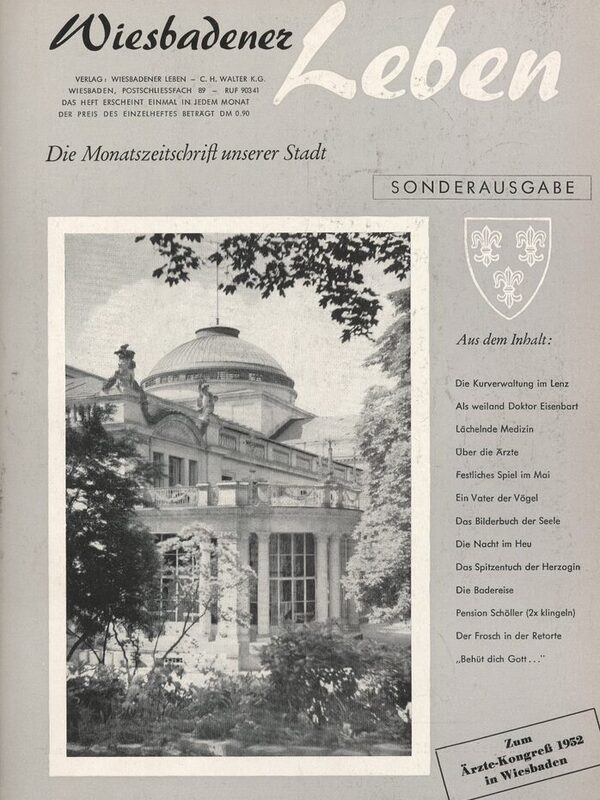Wiesbaden life
The intention of the magazine, founded in 1951, was to present Wiesbaden as a vital entity with its history as a spa, congress and administrative city (including the economic component), also taking into account its network of relationships with Nassau and with a focus on the multifaceted current affairs.
The monthly magazine, which included a calendar of events and notices from the spa and tourist association, thus offered information, knowledge transfer and entertainment in equal measure. Art, music and theater also played a special role - especially since the 1970s under the editorship of Kurt Thomas (former head of the Chmielorz publishing group, which published Wiesbadener Leben). As part of the cultural sector, serials appeared with a wide range of topics.
Carl Emde, for example, made a name for himself with his "Blick in die Galerien". Dr. Hans Kloos, who came from the Wiesbadener Kurier as head of the arts section, shed light on the theater, opera and concert scene in "Musisches Spektrum". The "Museum Treasures" were presented with commentary by the curator Dr. Günter Kleineberg. As a permanent author and editor-in-chief, cultural and art journalist Dr. Alexander Hildebrand has been addressing art as an existential necessity since the early 1980s. In cooperation with the "Institut für Bildende Kunst", which provided a forum for research into life in Wiesbaden, correspondence by Alexej von Jawlensky, among others, was transcribed and published for the first time. Essays on Jawlensky's entire creative spectrum provided impetus for exhibitions and catalog texts. The memoirs of the painter Otto Ritschl, who had been close to Jawlensky for a time, were also informative in this context.
Essays on Goethe, the Brothers Grimm and, for the first time, an article on the Central Collecting Point in Wiesbaden were published in the serialization segment. Furthermore, sacred buildings in the city, such as the Russian Orthodox Church of St. Elisabeth on the Neroberg, the Marktkirche as a striking silhouette or the Ringkirche with its realization of reformist ideas were presented. The Art Nouveau artist Hans Christiansen and the writer Alfons Paquet were also commemorated in reports.
The lasting merit of Wiesbadener Leben was that it fought against the inertia of overlooking and forgetting. Due to the decline in advertisements, the journal had to be discontinued at the end of 1995.
Literature
Hildebrand, Alexander: Das Institut für Bildende Kunst, forthcoming.
